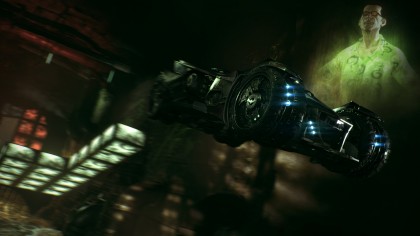How technology influenced the creation of Batman: Arkham Knight
You will be the Bat

The Batmobile rockets along a straight, black thunder threatening the army of criminals now sacking Gotham.
But Batman's personal tank can't help the Dark Knight get to the top of the crane he needs to reach, so he seamlessly ejects at velocity into a perfect glide. Before him, the lights of Gotham call to him. And in this moment, I am the Batman.
"Laying out the city was something that we did in conjunction with the design of the Batmobile's capabilities," Ginn explains.
"So how wide do the streets need to be? If you miss a corner and you hit the wall and you're going at 100 miles an hour do you just stop dead? Because that doesn't really feel like a very Batman experience, so we're like no, you clearly just have to just rip that corner off that building." And yes, Ginn was grinning wildly while he said that.

That meant creating a physics system, a destructible system for the environment, a regeneration system for the Batmobile, and the team at Rocksteady had to create them all.
On top of that, making the seamless transition between the Batmobile, combat and exploration work was an incredible feat. Ginn can barely contain his pride as he explains just how much pressure the engine team was under to deliver, and how well they performed.
"If they had to turn around and say to [Rocksteady founder] Sefton [Hill], 'This gameplay feature you've designed? We can't technically do it.' That would have been such a massive blow to the Batman fantasy.
Get daily insight, inspiration and deals in your inbox
Sign up for breaking news, reviews, opinion, top tech deals, and more.
"That's what you want to do. If we weren't able to do that – which we wouldn't have been able to on previous generations of hardware – I think the whole team would have been so depressed," Ginn says.